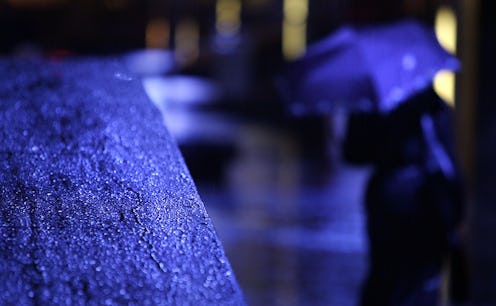Many people find themselves with a case of the winter blues during the darker months of the year, so you may already know that light is an effective treatment for Seasonal Affective Disorder, or SAD. But it turns out that light therapy might help non-seasonal depression, too, according to a new study published in JAMA Psychiatry. It looks like those SAD lamps are good year-round — not just when it's cold out!
For this study, the researchers used 122 participants who were between the ages of 19 and 60 years old and who all suffered from major depression. The participants were given one of four different treatments: 20 milligrams of the antidepressant Prozac each day, 30 minutes of daily light exposure with a fluorescent light, both the light exposure and the Prozac, or a placebo pill and daily exposure to air from an electric air purifier. These treatments were issued over the course of eight weeks, in which the study authors recorded data regarding depression severity.
In order to accurately how the participants' scores changed as a result of their treatment, the Montgomery-Åsberg Depression Rating Scale was used from before the start of the study to the trial's end — and remarkably, the researchers found improvements in all four groups' levels of depression. No other studies have yet shown light to be effective for those suffering from non-seasonal depression, so this is a significant finding that could provide many new options for treatment. Said lead author Dr. Raymond W. Lam, a professor of psychiatry at the University of British Columbia to the New York Times, "This is the first study to show that light treatment is an option for people with nonseasonal depression, which is much more common than seasonal depression. Light treatment [is] a safe treatment without a lot of side effects.”
Looking more closely at each of the four groups, the most effective treatment option was seen in those who were both given daily doses of Prozac and exposed to light therapy. For those who just took Prozac and those who took the placebo pill, the difference in the effectiveness of these treatments wasn't statistically significant. However, those who used only light therapy had more effective results than those who were in the placebo group. The combination treatment was the most effective one.
But light therapy isn't the only unconventional form of treatment for depression; these other four methods have also been found to do a lot of good.
1. Animal Therapy
I know I'm not the only one who feels comforted by my pet, but it turns out that your four legged friend can be good for more than just snuggles. Animal therapy has been recognized by the National Institute of Mental Health as a legitimate way of treating depression and other mood disorders.
2. Eating Omega-3s And Folic Acid
Getting more Omega-3 fatty acids and folic acids into your diet is a natural way that can help to ease depression, according to Ian Cook, MD, psychiatrist and director of the Depression Research and Clinic Program at UCLA. If you want to try this method, foods like spinach, salmon, and avocado.
3. Art Therapy
Art is another outlet that can be used to help those suffering from a range of conditions. In fact, there's even an official association for regulating art therapy in the United States: The American Art Therapy Association. There are over 5,000 registered art therapists in the country.
4. Primal Therapy
Instead of burying your issues, primal therapy focuses on directly facing the things that cause you pain in order to loosen their hold on you. It can be a very intense form of therapy, though, so it isn't widely practiced.
